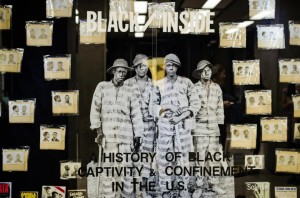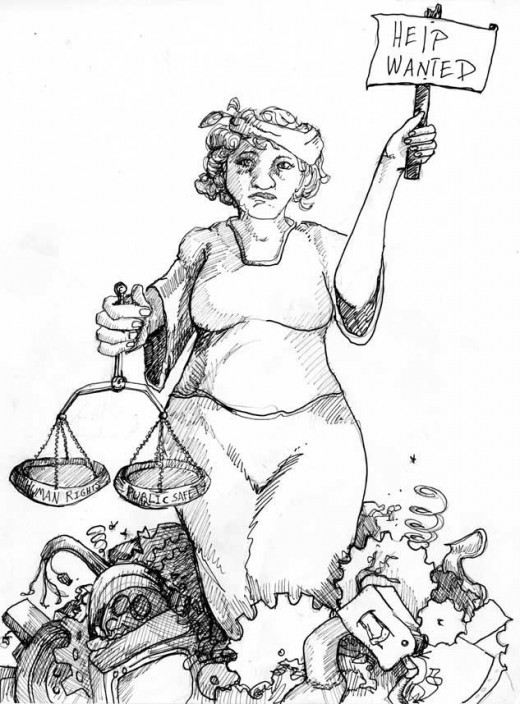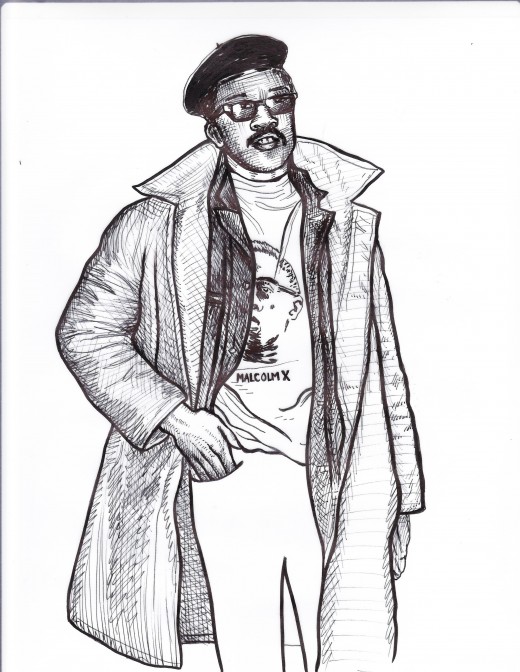
Photo by Sarah Jane Rhee
It’s been two weeks since the
Black/Inside: A History of Captivity & Confinement exhibition opened at the African American Cultural Center. I wanted to share some reflections…
First, I have pneumonia. This happens to me without fail. I work my ass off and then at the end I get sick. I am trying to figure out how to mitigate this. As a result, I spent most of the past week holed up in my apartment and wasting time on Twitter catching up on election related news.
Yesterday was the first time in 5 days that I set foot outside. I organized a screening of the excellent documentary Slavery by Another Name at the Jane Addams Hull House Museum. The film describes an 80 year period of convict leasing in the United States. I highly recommend it. We had a good group of about 35 people in attendance and the screening was followed by a short discussion. I then took about 20 people on a tour of the exhibition.
It has been amazing to me that we’ve already had several hundred people visit Black/Inside. People of all ages, races, and orientations have come through. The response has exceeded all of my expectations. I am so grateful that the exhibition seems to be impacting those who see it.
We have been collecting evaluations about the exhibit from those who are willing to share them. My favorite question on the evaluation is: “If you were to talk to someone about this exhibit, what three words would you use to describe Black/Inside?” Below is a sample of the responses (special thanks to my friend Eva for compiling these):
dismantling, insightful, grounding
knowledge, inspiring, touching
prison, unjust, racism
interesting, informative, enlightening
insightful, sad, interesting
informative, shocking, important
intriguing, enraging, informative
powerful, insightful, critical
enlightening, intriguing, mind-blowing
powerful, jarring, enlightening
powerful, energizing, saddening
historical, enlightening, powerful
powerful, heartbreaking, necessary
jarring, motivating, maddening
Thanks to everyone who has supported this exhibition by visiting, letting others know about it, and sharing your thoughts about it. If you are in the Chicago area, I invite you to visit the exhibition before it closes. OK, now back to Twitter and the election. November 7th can’t come soon enough…




